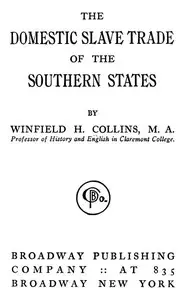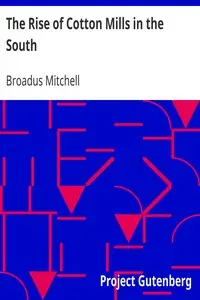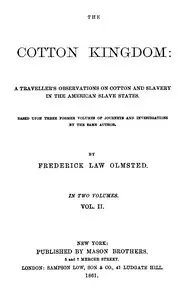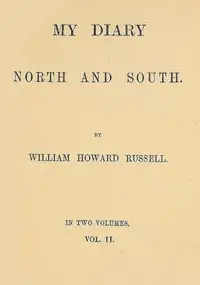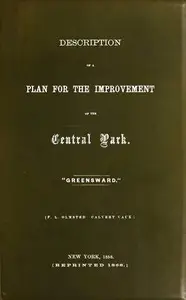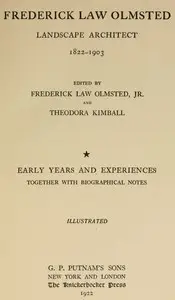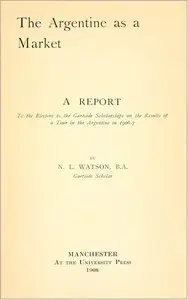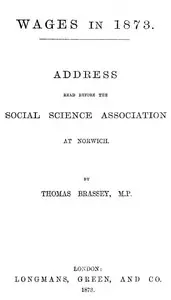"The Cotton Kingdom, Volume 1" by Frederick Law Olmsted is a mid-19th century narrative that recounts the author's journeys through the American South, spotlighting cotton production and the deep-seated institution of slavery. Throughout, the narrative presents an examination of slavery's impact on the cotton industry, while providing commentary on the social systems supporting it. The story begins as the author shares his journey from Washington and introduces a critical discussion around the political and social conflicts facing America, highlighting the moral and ethical challenges presented by slavery and setting the scene for in-depth observation into the everyday lives of slaves and the economic forces at play in these regions.
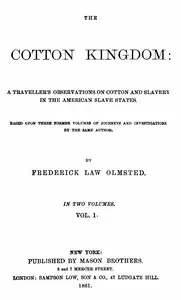
The Cotton Kingdom, volume 1 (of 2) : $b A traveller's observations on cotton and slavery in the American Slave States
By Frederick Law Olmsted
Witness the chilling reality of the antebellum South through the eyes of a traveler as he exposes the intricate bond between cotton and the chains of bondage.
Summary
About the AuthorFrederick Law Olmsted was an American landscape architect, journalist, social critic, and public administrator. He is considered to be the father of landscape architecture in the United States. Olmsted was famous for co-designing many well-known urban parks with his partner Calvert Vaux. Olmsted and Vaux's first project was Central Park in New York City, which led to many other urban park designs. These included Prospect Park in Brooklyn; Cadwalader Park in Trenton, New Jersey; and Forest Park in Portland, Oregon. He headed the preeminent landscape architecture and planning consultancy of late 19th century United States, which was carried on and expanded by his sons, Frederick Jr. and John C., under the name Olmsted Brothers.
Frederick Law Olmsted was an American landscape architect, journalist, social critic, and public administrator. He is considered to be the father of landscape architecture in the United States. Olmsted was famous for co-designing many well-known urban parks with his partner Calvert Vaux. Olmsted and Vaux's first project was Central Park in New York City, which led to many other urban park designs. These included Prospect Park in Brooklyn; Cadwalader Park in Trenton, New Jersey; and Forest Park in Portland, Oregon. He headed the preeminent landscape architecture and planning consultancy of late 19th century United States, which was carried on and expanded by his sons, Frederick Jr. and John C., under the name Olmsted Brothers.

